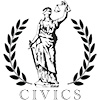| « The New Employment Relationship: Workers Bear All the Risks while Employers Keep the Profits | Exodus: Immigration, Law and Activism » |
Urban Planning Thu Jun 16 2011
The High Line Brought Down to Earth: Chicago's Bloomingdale Trail
It's been exactly one month since Rahm Emanuel assumed the mayoralty in Chicago, and already pedestrians are beginning to feel the Mayor's presence on city streets everywhere. Emanuel has given free reign to new CDOT commissioner Gabe Klein to introduce a series of measures in envisioning a more multi-modal, accessible, and interactive city whose streets serve a variety of functions. Klein has responded in a flurry of pedestrian-oriented activity, already implementing Chicago's first protected bike lanes, floating the idea for Chicagoans to do the "Barnes Dance" via diagonal street crossings, and proposing to transform the city's "under-utilized" bus shelter screens into gigantic smart-apps that indicate wait time for bus service, current bike- and car-sharing inventory information, and how long it would take to walk to one's final destination. Perhaps the biggest sign that Emanuel and Klein are pushing the city's functional form forward though is last week's news that design work on the long-proposed Bloomingdale Trail is moving ahead.
The dormant, 2.65-mile elevated railway line is often compared to New York's successful High Line project, and while the two projects share similar characteristics (two fallow, elevated railroad lines being remediated and reapplied), the discussion over the design of the Bloomingdale Trail indicates its function will differ significantly from the High Line. The High Line unravels as a highly manicured park that prohibits dogs and bikes, and exists as a bit of an open-air gallery piece. In contrast, the Bloomingdale Trail was included as part of Mayor Emanuel's transportation initiatives. As Adolfo Hernandez of the Active Transportation Alliance puts it, "The High Line is a passive space. The Bloomingdale Trail is meant to be an active space that can connect neighborhoods via bike and walking transit."
Emanuel is certainly aware of the economic benefit the High Line has brought to surrounding areas in New York, and no doubt hopes to see comparable rates of return in Chicago. Yet, unlike in New York, where the High Line has effectively created new neighborhood conditions that have changed the character of its surroundings, the success of the Chicago model is based more upon its functionality as a space that seamlessly integrates itself into the neighborhood fabric, and activates some of the locked-up potential in the immediate vicinity. In essence, the Bloomingdale Trail may be a more organic answer to many of the criticisms lobbed against the High Line in the past, such as in the recent Witold Rybczynski New York Times piece, "Bringing the High Line Back to Earth." Recognizing that most cities don't have New York's density and built-in, already activated assets, Rybczynski questions whether other cities should be looking towards the High Line as a model for reclaiming and remediating vacant spaces.
Ben Helphand, President of the Friends of the Bloomingdale Trail, echoes Rybcyznski's doubts. "The High Line is a wonderful open space - it's just not something that can be replicated cookie-cutter across the world, just like Bilbao can't or shouldn't be replicated for every new museum," Helphand states. "What we do have, and will continue to have, are remnants from our industrial past, and increasingly, our auto-indulgent heyday. These remnants of rail lines, canals, river edges, factories, landfills, quarries, and too-wide streets can be reclaimed as new, active, often odd-shaped spaces." Rather than glossing its identity over with audacious design, the Bloomingdale Trail aims to reenergize itself as a space that provides "a mixture of fun, exercise and transportation." Helphand continues, "I would not be surprised if you saw thousands using the Trail as part of their morning and evening commutes, connecting to existing bike routes to the Loop and the bike boulevard system on the west. It also has convenient connections to two CTA train stations, the Metra station at Clybourn, and several major bus routes. For students at the 12 schools within easy walking distance of the Trail, it'll help provide safe and healthy routes to school." The Bloomingdale Trail as envisioned is not a gallery; it's a functional corridor.
Such a cohesively designed remediation project could serve as a more realistic example for other like-minded projects across the country, and even other spaces within Chicago, such as the Englewood ERA Trail. Hernandez, of Active Trans, believes the development of the Bloomingdale Trail could act as as the first domino to drop in spurring further movement. "There are different challenges in different communities, but the Bloomingdale Trail can be a catalyst. Most important though, the community has to inform the character the trail will take." Seeing the pace that Emanuel and Klein are setting, it may be soon that Chicagoans are setting examples for other cities and activating spaces all over.
This post also appears on CNU.org












M K McClure / December 17, 2011 8:14 PM
The Bloomingdale Line would be better off saved as both a trail and a light rail line to move people east-west. The ROW is plenty wide to do this. The demographics of the ex-NYC High Line are considerably higher-end than the neighborhood along the Bloomingdale Line. Plus there is considerable need for an east-west route that could link between the Milwaukee N and W lines and the UP NW line and then head farther east. Time for Daniel Burham-like planning. Save it for transit!